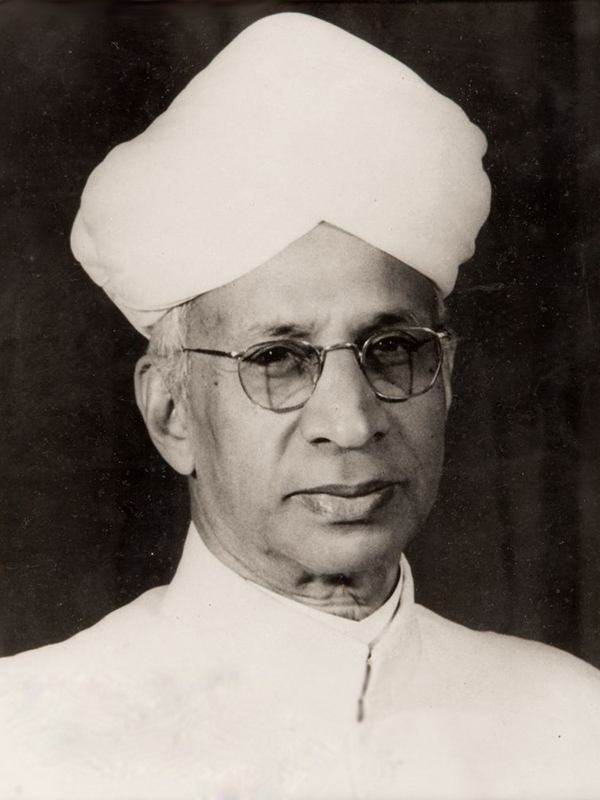Dr. Sarvepalli Radhakrishnan was the first Vice President of India and was also the second President of India. He was a famous teacher and his birthday is celebrated as Teacher’s Day in India.
Dr. Sarvepalli Radhakrishnan was born on September 5, 1888 in Tiruthani, tamil nadu, in a poor Brahmin family. He completed his M.A. with Philosophy as his major. In 1918, Dr. Sarvepalli Radhakrishnan was appointed as professor of Philosophy by the University of Mysore. In 1921, Dr. Radhakrishnan was nominated for Professorship in Philosophy at the Calcutta University. Later, in 1923, Dr. Radhakrishnan’s book “Indian Philosophy” was published. The book was hailed as a “Philosophical classic” and a “literary masterpiece.” In 1931, Dr. Radhakrishnan was elected Vice Chancellor of the Andhra University. In 1939, Dr. Radhakrishnan became the Vice Chancellor of Banaras Hindu University. In 1949, he was appointed as Ambassador to UNESCO. After Independence Dr. Radhakrishnan was requested to Chair the University Education Commission in 1948. Dr. Radhakrishnan Committee’s suggestions helped mould the education system for India’s needs. In 1949, Dr. Radhakrishnan was appointed Ambassador to the Soviet Union. Dr. Sarvepalli Radhakrishnan died on April 17, 1975. He received several awards including the Bharat Ratna and Knighthood from the British emperor King George V in 1931.
Many have claimed that when the atmosphere in the Parliament becomes chaotic with political leaders arguing with each other, Dr. Radhakrishnan would to calm the heated atmosphere in an unusual way. He would recite verses from the Bhagvad Gita or the Bible to install discipline in the crowd. The former Indian Prime Minister Jawaharlal Nehru had quoted that “Dr. Radhakrishnan made the parliament sessions seem more like family gatherings.”

One day when Dr. Radhakrishnan was leaving from Mysore for Calcutta, the students brought a carriage that was decorated with flowers for him, and the students pulled the carriage themselves for 5 kilometers. Many distinguished citizens of Mysore marched along with the carriage to pay their respect to Dr. Radhakrishnan.
His words were brevity and clarity like “rang in the ears of his students even fifty years later”. Such was the impact of his short, 20 minutes lectures.
He used to meet students of his tutorial group at his residence and talk of different matters over tea. Without exception, whether one was his student or not, he was loved and respected by all. He was an ideal teacher.
At Manchester College, Oxford, Dr. Radhkrishnan delivered four lectures on “The Hindu view of life”, without a scrap of paper to assist him; the duration of each lecture was for an hour!